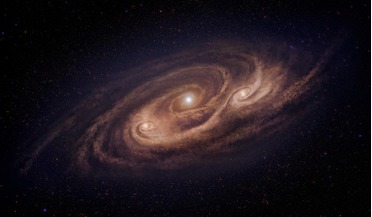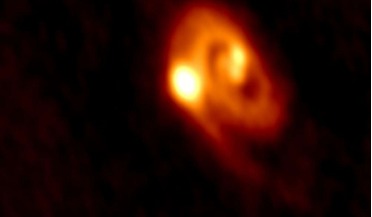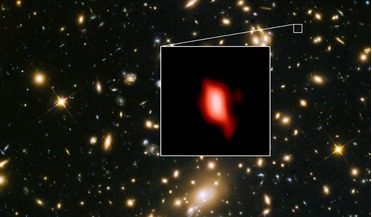 05 November 2018
First global thermal map of Europa reveals curious cold spot
05 November 2018
First global thermal map of Europa reveals curious cold spot
Scientists using the Atacama Large Millimeter/submillimeter Array (ALMA) have created the first global ...-up as to where to start looking for signs of life. “These ALMA images are really interesting because they provide the first global map of Europa...
 08 March 2017
The most distant galaxy yet observed by ALMA gives insight into first stars
08 March 2017
The most distant galaxy yet observed by ALMA gives insight into first stars
.... The international team of astronomers, led by Nicolas Laporte of University College London, used the Atacama Large Millimeter/submillimeter Array (ALMA) to observe the youngest and most remote galaxy ever seen by this observatory to provide brand...
 30 August 2018
Unstoppable monster galaxy puzzles and enlightens astronomers
30 August 2018
Unstoppable monster galaxy puzzles and enlightens astronomers
... the James Clerk Maxwell Telescope (JCMT), and later with the Large Millimeter Telescope (LMT). However with additional data from the Atacama Large Millimeter/submillimeter Array (ALMA), an international team of astronomers from Japan, Mexico and the...
 27 October 2016
Rare newly forming triple star system observed by astronomers
27 October 2016
Rare newly forming triple star system observed by astronomers
Scientists using the Atacama Large Millimeter/submillimeter Array (ALMA) have detected a rare triple-star system ...spins faster and falls toward the star. If the disk of gas is large enough, spiral arms form and the disk can fragment to another star. ...
 07 June 2019
First-ever image of cool gas disk surrounding Milky Way's black hole
07 June 2019
First-ever image of cool gas disk surrounding Milky Way's black hole
... with any free ones floating around. Specifically built to detect signals such as these, the Atacama Large Millimeter/submillimeter Array (ALMA) was able to detect this faint radio radiation as it travelled to Earth relatively unhindered, and have...
 16 May 2018
Astronomers find stars forming just 250 million years after Big Bang
16 May 2018
Astronomers find stars forming just 250 million years after Big Bang
... the most distant galaxy ever observed by the observatories that studied it; ESO’s Very Large Telescope (VLT) and the Atacama Large Millimeter/submillimeter Array (ALMA) – an array that has already set the record for detecting the most distant oxygen...